You might have heard about a diverter valve. But what does it actually do, where is it found, and what happens when it goes bad? Let’s find out about it today.
What Is a Diverter Valve?
A diverter valve simply redirects the flow of water inside your plumbing. Instead of sending the water one way, it can send it to a different pipe or fixture when it needs to.
Let’s say you got a diverter valve for a shower and a bathtub that shares the same pipe for water delivery. When you turn the knob to take a shower, the diverting valve kicks in. It takes the water that usually flows down into the tub and shifts it up into the showerhead instead. That way, the same line supplies water to both the bathtub and the shower, but you control which one gets the water through the valve.
Think of it like a roadblock that shuts one path and opens the other. It’s simple, and you’ve probably used this one many times without knowing its name. You may know it by other names, as many plumbers or hardware stores call it a switch valve, multi-way, or combination valve.
How Does a Diverting Valve Work?
There’s a movable part like a gate or cartridge in the diverter valve. When you turn the diverter handle clockwise or anticlockwise (depending on what you want to do with it), it moves that gate to block one path and open another. So, instead of water flowing down into the tub, it reroutes the flow up to the showerhead. And when you finish the shower and switch the knob back, the valve closes the shower path and opens up the tub again.
Where Is a Diverter Valve Located?
In most homes, you’ll find these diverter valves directly behind the wall plate of your tub or shower faucet. That knob or lever you pull up or turn to start the shower, well, that’s connected to the diverting valve inside the wall.
In some plumbing systems, especially with the modern ones or boilers, you might also see diverting valves on heating lines. In those cases, they shift hot water between different parts of the heating system, like radiators or underfloor heating loops.
But for home bathroom plumbing, it’s mainly about switching the water flow between tub and shower.
What are the Different Types of Diverter Valves?
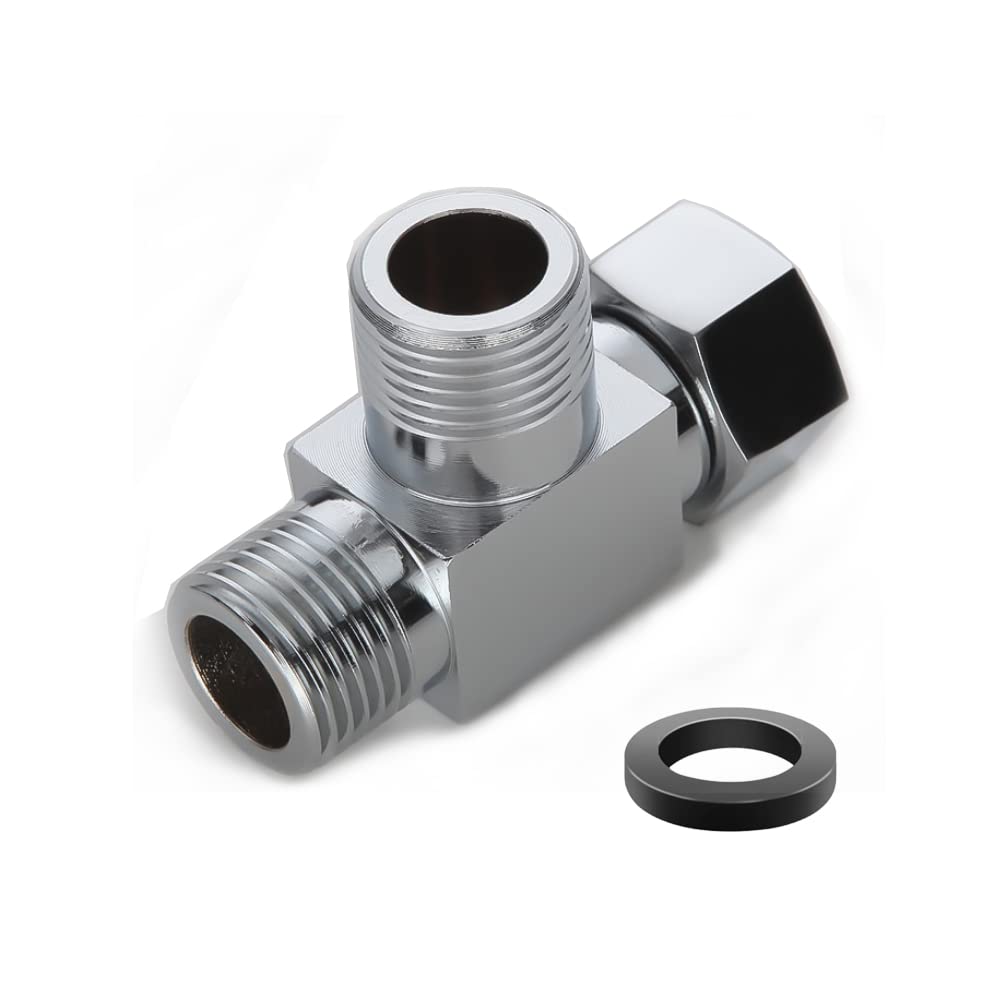
1. Tee Diverter Valve
This one’s the most common type. You’ll find it in a single-spout setup where the water either flows down into the tub or goes up into the showerhead. It’s usually activated by a pull-up knob right on the tub faucet.
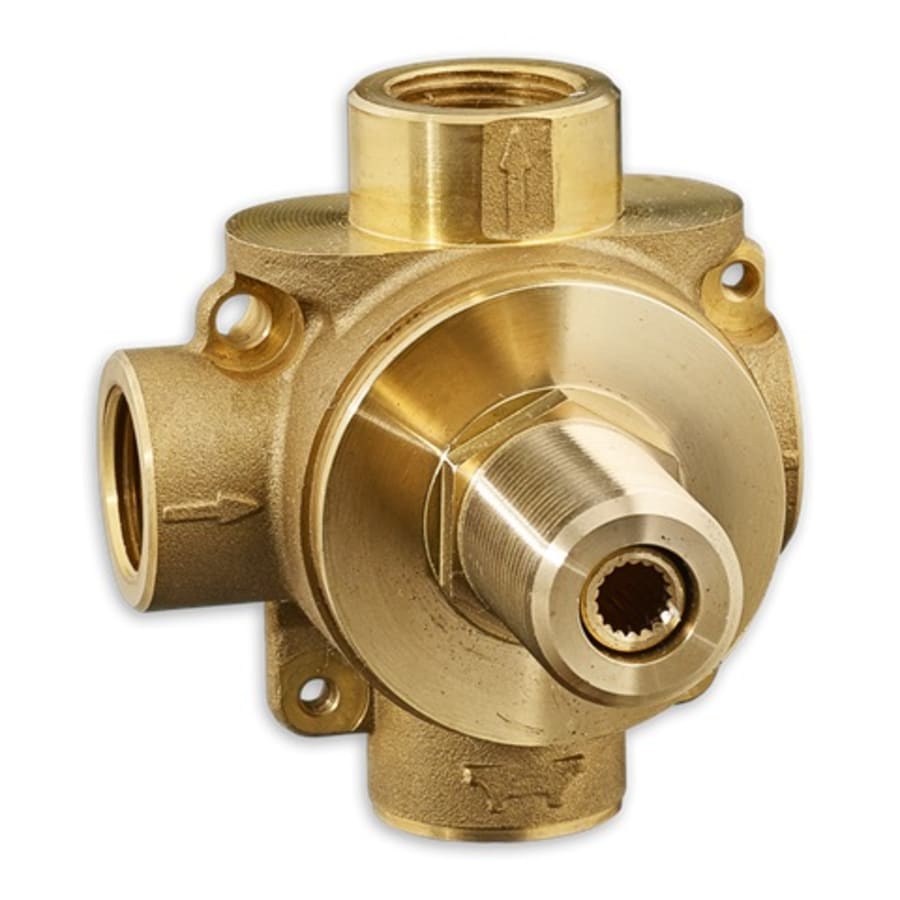
2. Two-Function Diverter Valve
The two-function diverter valves (aka Two Way Diverter Valves) are used where there are two separate handles. One for hot water and one for cold. After you turn on both hot and cold taps to get the temperature right, there’s a middle valve or lever you twist. It doesn’t mix the water; it just reroutes it once you’ve already done the mixing.
So here, your focus is on turning each handle for the right water blend, and then the diverter kicks in to send it upward.
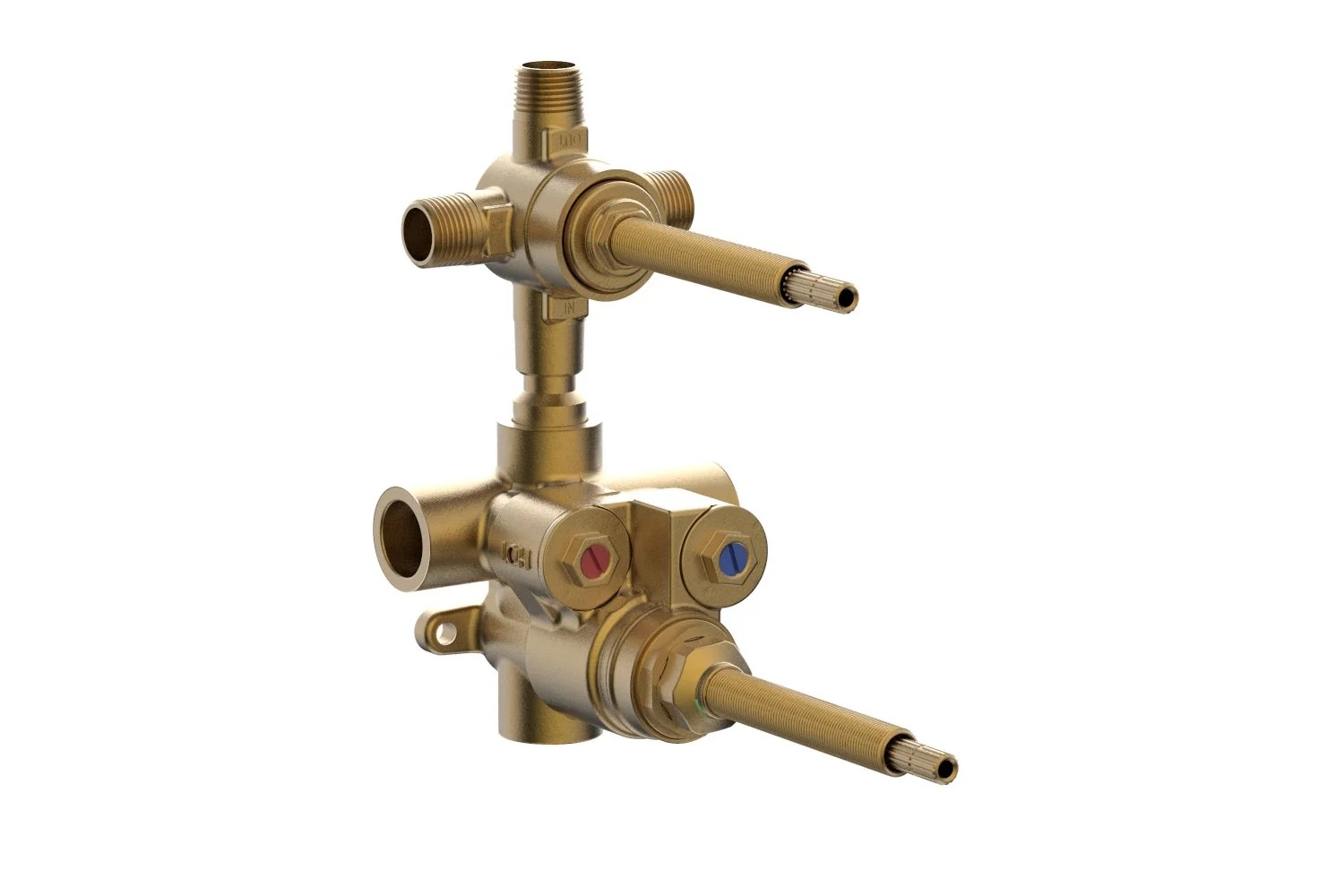
3. Three-Function Diverter Valve
Now this type gives you three knobs—hot, cold, and one for diverting. You adjust hot and cold like normal, and then turn the third handle to switch the flow from one fixture to another. The three-function diverter valve is mostly used in older homes, but the more moving parts in it also mean that it can wear out quickly.
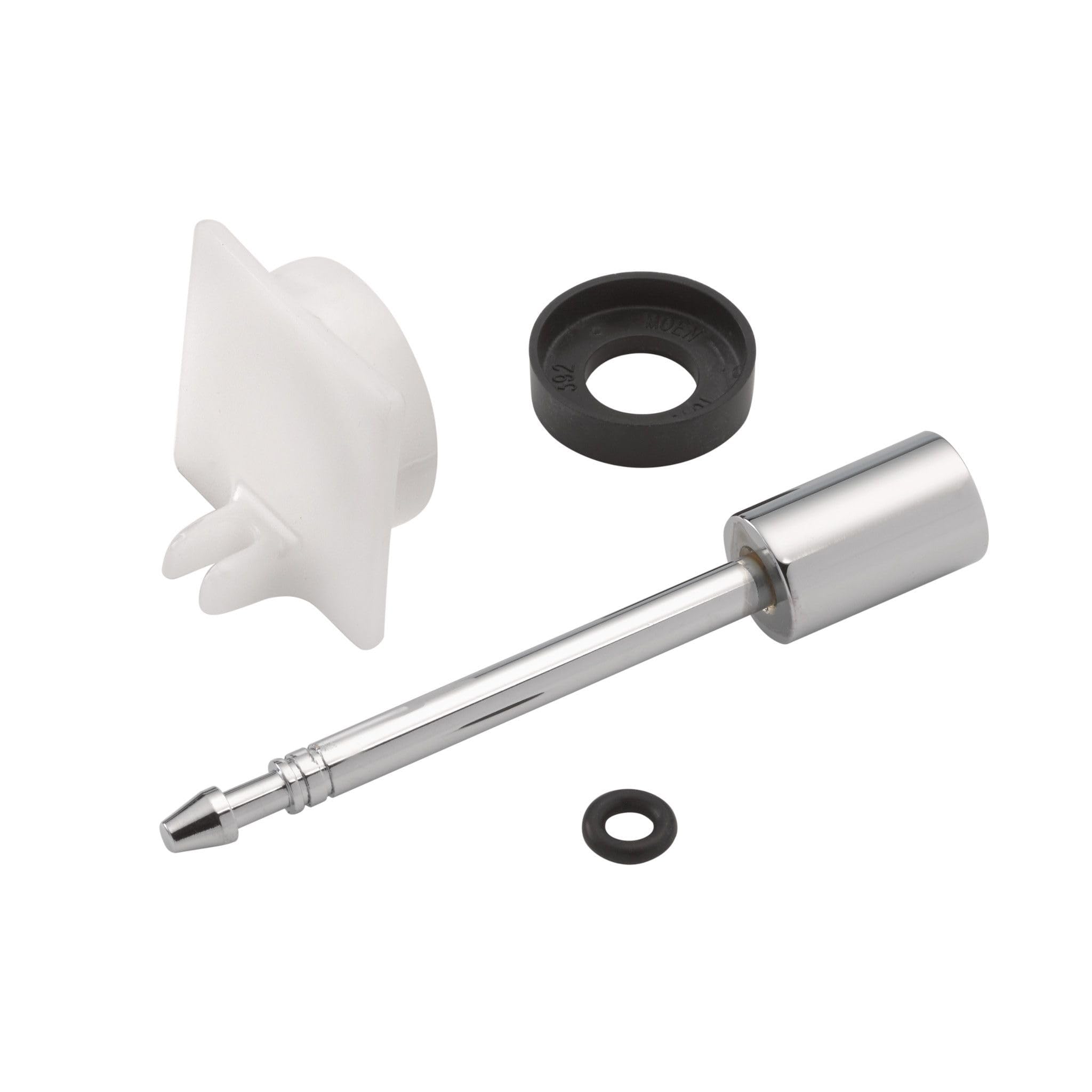
4. Tub Spout Diverter Valve
As the name suggests, the tub spout diverter valve is a part of the spout itself. When you run the water, it flows out of the tub spout as usual. But there’s a lever or button on the spout. You press or pull it, and it blocks the exit, so water moves to your chosen fixture.
It’s like a shortcut version of the Tee diverter, and is super common in budget-friendly plumbing setups.
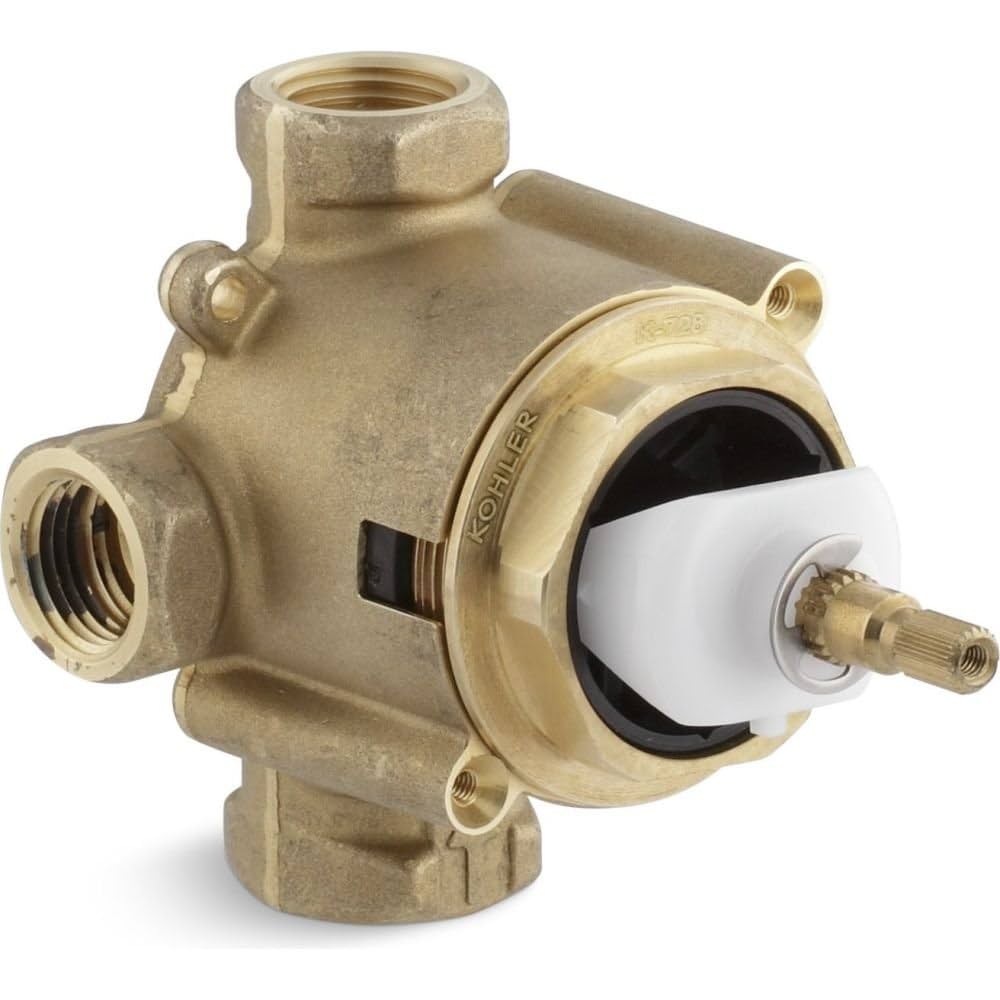
5. Transfer Valve
This one’s a bit different from a regular diverter. Instead of choosing one outlet at a time, it can send water to multiple fixtures at once. For example, you could have both a rain shower and a handheld wand turned on together. So, these can be 2-function or 6-function valves that are very popular in modern bathrooms due to their convenience.
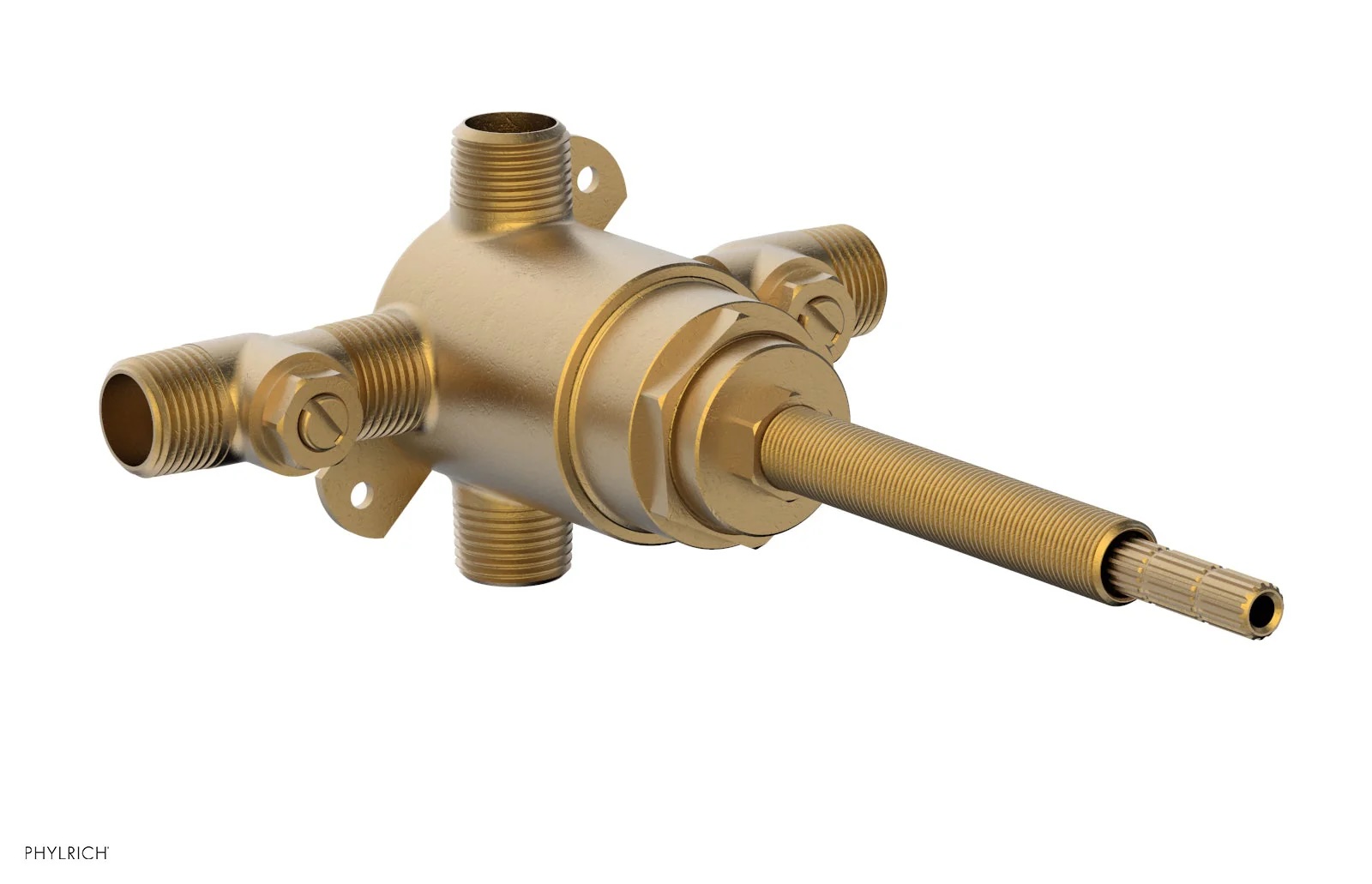
6. Pressure-Balancing Diverter Valve
The pressure-balancing divert valve can handle the water pressure and temperature together. It not only keeps the flow of water in one fixture consistent when someone uses another one, but also has a valve to switch the complete water flow to a single fixture.
It’s more advanced and often found in newer or high-end homes because it prevents sudden bursts of hot or cold water while still acting like a diverter.
What are the Symptoms of a Bad Diverter Valve?
The diverter valves fail right, left, and center, and when they do, the symptoms are clear:
- If water flows to two fixtures at once when it should go to just one, the valve isn’t closing off the unwanted path fully anymore.
- You may notice lower water pressure than usual at the outlet you selected for rerouting. This is due to the fact that the valve might be blocked, stuck, or only opening halfway.
- If the knob or lever is harder to move or turns too loosely without doing anything, the moving parts inside the diverter valve are likely worn out.
- You’ll see water leaks from an outlet that shouldn’t be active, even slightly; it usually means the diverter can’t shut that line at all.
- You hear rattling or high-pitched noises when water runs through the diverter valve.
- Also, the water temperature starts to shift or doesn’t stay at a single degree point for the usual time. The possibility here is that the diverter could be affecting how hot and cold lines are managed.
- If you turn the diverter and nothing switches over, then it’s either stuck in one position or completely broken inside.
Can I Fix a Diverter Valve?
If the diverter is part of a shower spout or right in front of you, like something you can pull, twist, or unscrew without opening walls or touching heating lines, then yeah, you can try fixing it like sailing in vinegar, or replacing that yourself. That’s the kind of thing people do all the time with a basic wrench and maybe a YouTube explainer video for cleaning.
But if the diverter is inside the wall, behind a boiler, or part of a central heating system, then no, you should not try to fix it yourself. That stuff connects to pressure systems, hot water lines, or gas appliances. If you try to mess with it, this could cause flooding, hot water bursts, or even legal issues, especially if it involves boilers.
How Much Is a New Diverter Valve?
Basic diverter valves you can buy for plumbing or showers range mostly between $10 and $200, depending on brand and features. If you ask a plumber to install or replace it, including labor, expect a total cost from $225 up to $575 in most cases.
Call a Plumber to Repair or Replace the Diverter Valve
If the diverter valve is inaccessible to you, like inside a wall, or linked to heating or boilers, call a plumber. No shame in calling a pro for the tough stuff. You just saved yourself a big headache by asking first. California Coast Plumbers can come in right now and get rid of this problem for sure.
